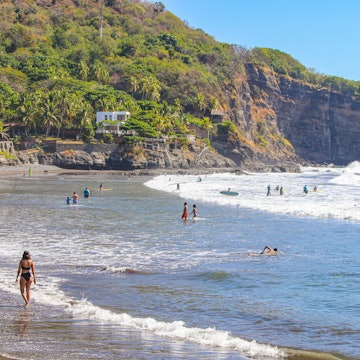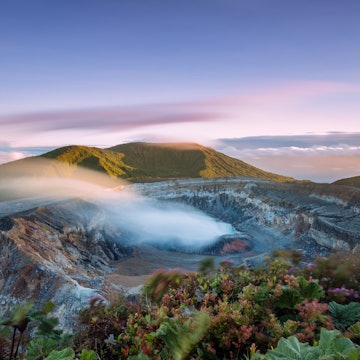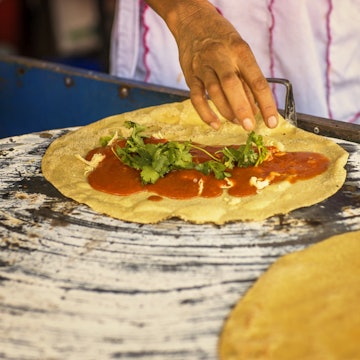

Costa Rican coffee. JoeYinJie/Shutterstock
If you like to drink coffee, you’re going to love Costa Rica. Thanks to its rich volcanic soil and varied topography, this small country produces coffee beans with impressive depth and a variety of flavors.
And, in true Costa Rican style, many plantations are taking significant steps toward sustainability and regeneration – so coffee here is not only good for your body and soul, it’s also good for the earth.
Why is Costa Rican known for coffee?
In 1821, the government of a newly independent Costa Rica distributed coffee seeds to farmers, in hopes of boosting the country’s economy.
As it turned out, the soil and climate of the highlands were ideal for coffee cultivation, and it transformed the impoverished country into the wealthiest in Central America.
The crop earned the nickname el grano d’oro (the golden bean), generating funding for roads, railways and other national infrastructure.
Even the magnificent Teatro Nacional in San José was funded by a tax on coffee exports, as well as donations from wealthy coffee barons.
The mural on the theater’s ceiling, Alegoría al Café y al Banan, by Italian artist Aleardo Villa, is a tribute to the crops that played such a critical role in the country’s development.
Today, coffee is still arguably the country’s most important agricultural product, and it remains a significant export. Tens of thousands of farms are dedicated to coffee production, 90% of which are smaller than five hectares.
It is a vital source of income in coffee growing regions and an integral part of Costa Rican culture around the country.
Fortunately for visitors, there’s no shortage of ways to sample Costa Rica’s delicious varieties of coffee and to learn about how it is produced. Here's our pick of the best places for coffee in Costa Rica.
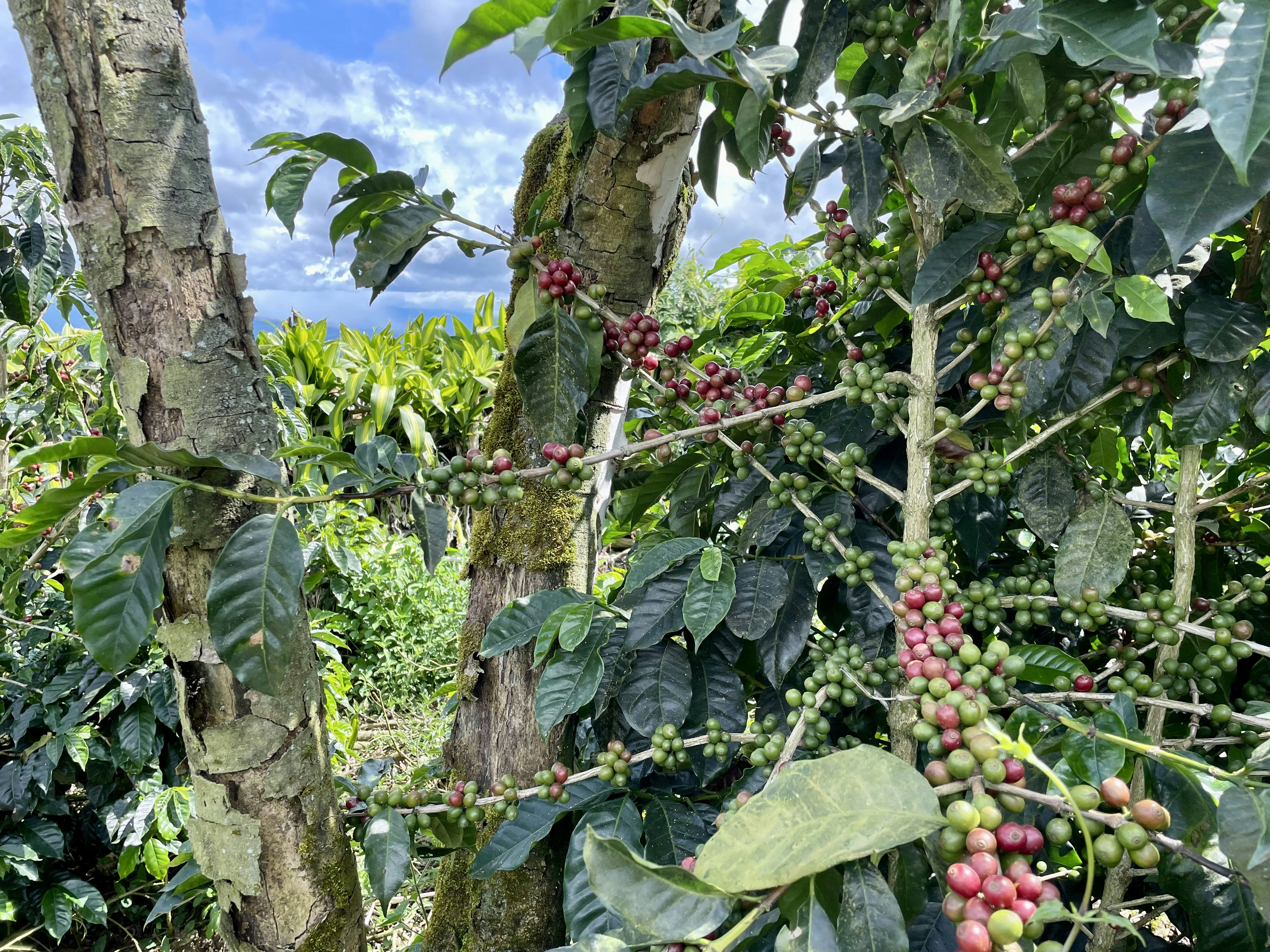
1. Escalante, San José
Best urban neighborhood for coffee lovers
East of downtown San José, Escalante is the capital’s trendiest neighborhood, buzzing with youthful energy, with many enticing options for eating and drinking in style.
Take your pick from the classy coffee shops that line Calle 33 and surrounding streets, all dedicated to showing off the best of Costa Rican brews.
Coffee culture is on full display at the cozy Cafeoteca Coffee Shop, which offers tastings, tours and workshops, in addition to its extensive menu of 25 different kinds of coffee from all over the country.
Curious coffee drinkers can learn all about different roasting techniques, brewing methods and serving styles, and (hopefully) end up savoring that perfect cup o’ joe.
There are several other inviting coffee shops in the area, and you really can’t go wrong: drop in to see what’s brewing.
Getting to Escalante: Escalante is about 2km (1.2 miles) east of downtown San José. It’s a 20-minute walk or a 5-minute taxi ride.
2. Chepecletas Coffee Tour, San José
Best coffee tour in San José
For a sampler of the capital’s best coffee, sign up for the Chepecletas Coffee Tour, a walking tour that introduces the city’s history, culture and architecture, interspersed with stops at three favorite coffee shops.
This is a fantastic way to explore the city, see the landmarks, and get expert insights from a knowledgeable guide, with a special focus on the city’s rich coffee culture.
Meet the baristas, learn about their brewing and pouring techniques, and taste the coffee in the best shops, that typically roast their own coffee and source beans directly from farmers. Many are owned by baristas who get behind the bar and make the drinks themselves.
Tour stops vary, but they might include Modo Café, an Escalante coffee shop that is owned by a two-time national barista champion. Another favorite stop is La Mancha, located in a historic downtown building, which is known for its special Henry Blend of cascara and cold brew.
Planning tip: Chepecletas also offers a walking tour of the Mercado Central (Central Market) and a guided city cycling experience, both of which also feature coffee stops.

3. Café Monteverde, Santa Elena
Best for sustainability
Café Monteverde has two cafes – one in Santa Elena and one in Monteverde – where you can sample the top-notch coffee that is produced at its local farm and roastery.
But do yourself a favor and visit the actual farm and roastery, where you will learn all about its innovative, eco-friendly growing methods, see the harvesting, processing and roasting processes, and sample the goods.
In season (October to March), guests can even participate in the picking of the beans. A cooperative of 20 local families, Café Monteverde is a true Costa Rican success story, showcasing sustainable farming techniques and a delectable final product.
Café Monteverde uses several methods to process the beans, from the traditional "washing" to the “natural” process, which involves drying the entire cherry. The result is a wide variety of flavor profiles, ranging from lighter and fruitier to more full-bodied.
You can’t go wrong with the signature medium-roast, fully-washed coffee, which offers an ideal balance between sweetness and acidity, with hints of brown sugar and caramel.
Getting to Café Monteverde: The Café Monteverde coffee tour is about 4.5km (2.8 miles) from Santa Elena. Drive north out of town on Rte 606 for 4km (2.5 miles), then turn south at the distinctive Iglesia de Cañitas. For an additional fee, Café Monteverde can pick you up at your hotel.
4. Santuario Ecológico, Santa Elena
Best for mindful coffee drinking
Set amid the lush forest on the outskirts of Santa Elena, this “ecological sanctuary” offers sensual coffee rituals that are also lessons in mindfulness, sustainability and respect for the earth. Depending which ritual you choose, it might include a history lesson, a garden tour, a coffee tasting or a dessert pairing.
In all cases, Chris Salazar – owner, guide and coffee guru – highlights the sights, sounds and smells that enhance the coffee-drinking experience. His passion for the earth and its bounty – especially the coffee bean – is truly contagious.
A family-run operation, Santuario Ecológico also offers cooking classes, hiking trails and rooms to rent. The Salazar family brings warm hospitality and unbridled enthusiasm to all aspects of their endeavor.
Getting to Santuario Ecológico: Santuario Ecológico is about 2km (1.2 miles) from the “triangle” in Santa Elena. Heading south out of town on Rte 620, turn left at the Escuela Rafael Arguedas Herrera.
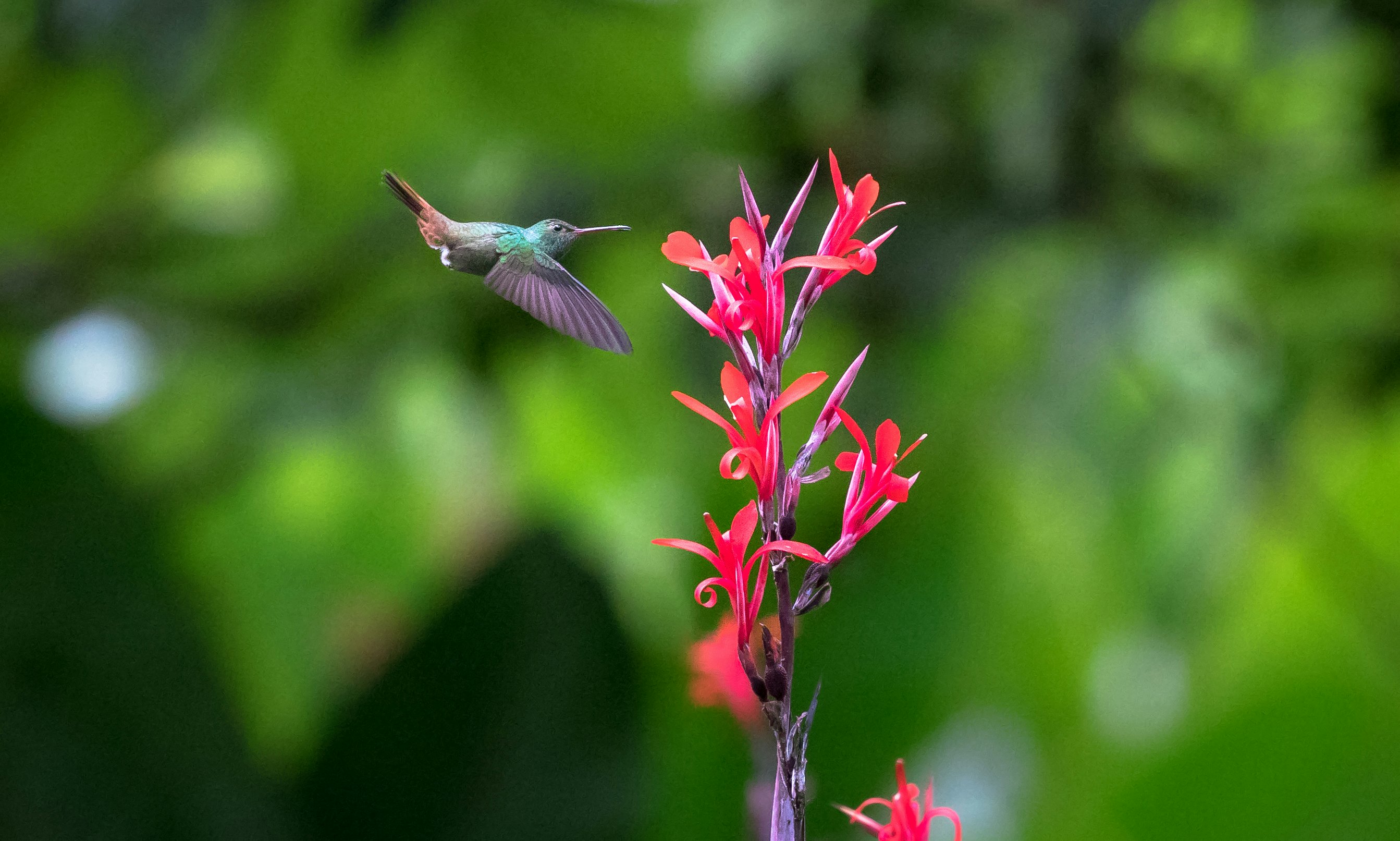
5. Café Colibrí, Monteverde
Best for coffee while birding
Just outside the gates of Monteverde Cloud Forest Reserve, this tiny cafeteria has delicious coffee, pastries and – best of all – scores of hummingbirds fluttering around its patio.
You don’t have to be a bird nerd to appreciate the many species of colibrís buzzing about the flowers and feeders (also offering incredible photo ops).
The hummingbirds provide the entertainment, and the cafe provides the sustenance: hot and cold coffee drinks as well as mini quiches, cinnamon rolls and other fresh-baked goodness.
The place is simple, but the food and drink are on point. Sipping a coffee frappe and spying on birds is a wonderful way to recover from a cloud forest hike.
Getting to Café Colibrí: Café Colibrí is outside the main entrance of Monteverde Reserve, tucked into the wooded hillside on the north side of the road.
6. La Casona del Cafetal, Lago de Cachí
Best for lakeside views
On the banks of the Lago de Cachí – not far from the eponymous dam – la Casona del Cafetal is a classy restaurant and hotel with outdoor seating and stunning views of the shimmering lake and gray-green hills beyond.
Multicolored blooms blanket the grounds, which stretch down to the water’s edge, and trails wind through the surrounding coffee plantation. If you’re visiting Orosí or taking a drive around the lake, this exquisite setting is a perfect place for a coffee break.
The coffee is prepared using a traditional chorreador, a simple wooden stand with a cloth filter, which is brought to the table so you can watch the magic. Coffee from Orosí is known for its floral notes, sometimes with hints of chocolate or nuts.
Enticing accompaniments include crepes and classic chorreadas (corn pancakes), topped with honey. Buy yourself a hand-crafted, single-serving chorreador at the art market near the parking lot.
Getting to La Casona del Cafetal: La Casona del Cafetal is on the lakeshore, about 1km (0.6 miles) west of the village of Cachí and 2.5km (1.5 miles) south of the dam.

7. Red Frog Coffee Roaster, La Fortuna
Best for enticing aromas
Red Frog Coffee Roaster doesn’t look like much from the outside (or rather, it looks like too much, with its barrage of signs plastered around the exterior). But as soon as you enter the shop, the fragrance of fresh-roasted coffee beans envelops you, and you know you have come to the right place.
Red Frog is the only spot in La Fortuna that procures its beans from highland plantations, then roasts and grinds them on the premises. That explains the heavenly aroma and the fresh flavor.
The specialty of the house is coffee prepared in a chorreador, but Red Frog also serves espresso drinks, iced coffee and even coffee cocktails – the Monkey Business (iced coffee with banana liqueur and chocolate sauce) is a particular favorite.
It also gets rave reviews for its traditional breakfast, eggs with gallo pinto (rice and beans). This place is definitely not fancy, but the coffee is as good as it gets.
Getting to Red Frog Coffee: It is 2km (1.2 miles) west of La Fortuna’s central park, on the main road to Volcán Arenal.
8. Finca Rosa Blanca, Heredía
Best place to stay for coffee lovers
Some 40 years ago, in the highlands of Heredía, the Jampol family undertook a project to transform a derelict motocross field into an organic coffee farm.
They now share the fruits of this labor with an informative plantation tour covering the ins and outs of coffee production, from the red coffee cherry to the dark roasted brew.
A daily coffee hour takes place on the deck, while the restaurant offers a connoisseur’s tasting menu, featuring a coffee element in every course. (Chicken with coffee-chocolate-mole sauce? Yes, please!)
Nowadays, it also operates a luxury inn – Finca Rosa Blanca – amid the lushness of its thriving coffee plantation. The boutique hotel is a delight, with 14 unique suites, each custom decorated with artistic pieces and offering glorious views of the Central Valley and San José in the distance.
Getting to Finca Rosa Blanca: Just 30 minutes' from Juan Santamaría International Airport, this is an ideal spot to spend the night (or several nights) on the way in or out of the country. From the village of Santa Barbara de Heredía, take Rte 128 east for 1km (0.6 miles), then turn left onto Calle Rosa Blanca.
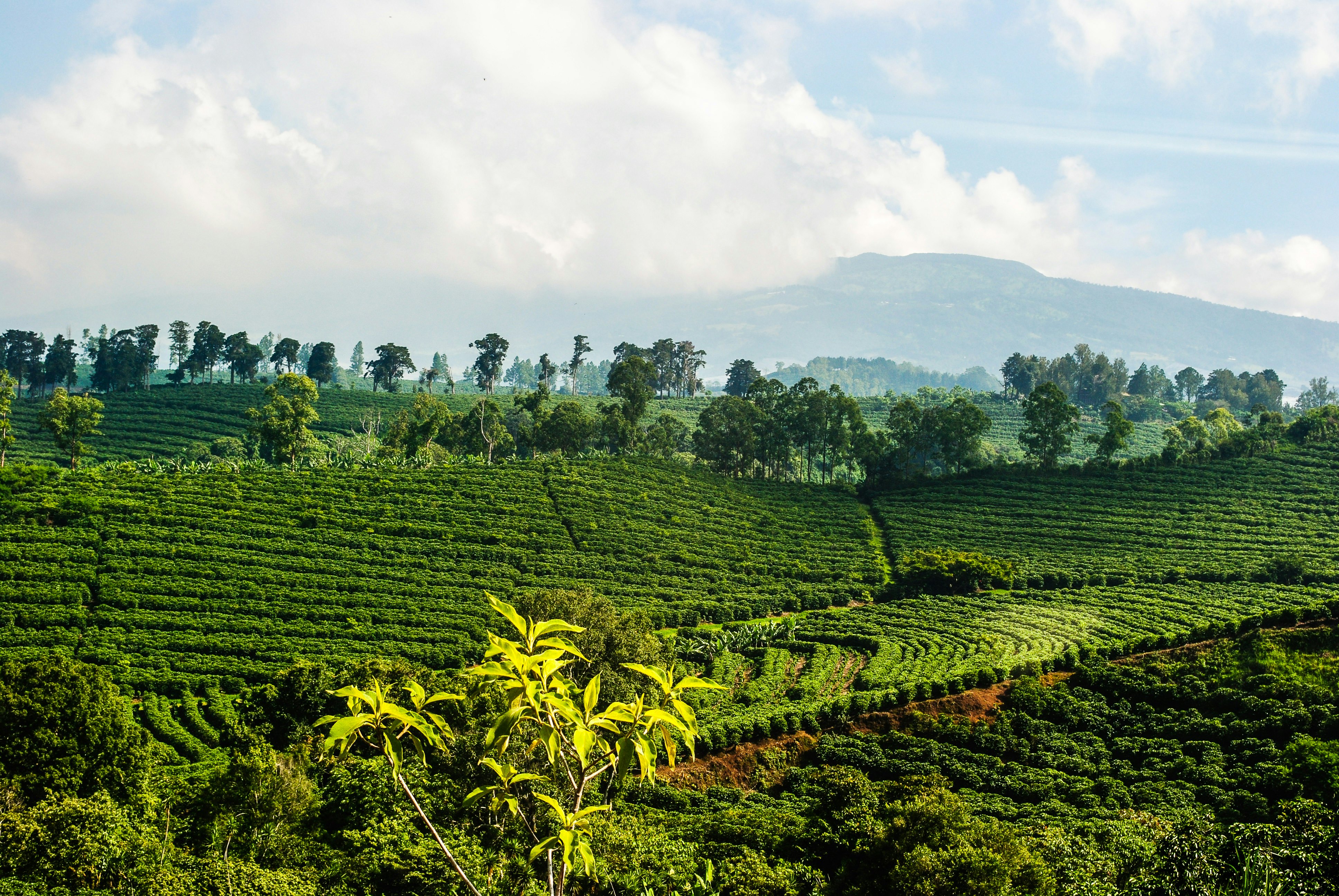
What you need to know about coffee in Costa Rica
When to go: You can tour coffee farms and sample delicious coffee at any time of year in Costa Rica. But if you’re keen on seeing the process of coffee production first-hand – from beans to cup – you’ll want to come during harvesting season (November to March). This is your chance to witness and even participate in the labor-intensive process of selecting and handpicking the coffee beans. After the harvest, there are various methods of processing the beans, involving skinning, fermenting and drying them, before roasting. That said, most coffee tours offer a demonstration or explanation of the process at any time of year.
Coffee Fair: The country’s best celebration of coffee takes place on the third weekend in January in the small town of Frailes, 35km (22 miles) south of San José. The Feria del Café is a three-day festival of picking races, farm tours, cupping competitions, live music and dancing, and bountiful food and drink.
Traditional brewing methods: The traditional means of brewing coffee is the chorreador, a simple wooden stand that holds a cloth filter, or bolsa. The resulting brew is known for its smooth texture and rich flavor. Households across Costa Rica still use this traditional method of making coffee, especially in rural areas. However, most coffee shops now offer a variety of brewing methods, in addition to the chorreador.
When to drink coffee: Coffee in Costa Rica isn’t just for breakfast. Customarily, Ticos often take a break in the afternoon, often gathering with friends or family for a quick pick-me-up. This afternoon ritual is affectionately known as cafecito, or “little coffee”, and is usually accompanied by sweets or snacks.
How to bring it home with you
All coffee tours (and many coffee shops) sell beans and grounds that you can take home for a perfectly delicious souvenir.
You can also buy excellent coffee for lower prices at local markets and grocery stores: look for high-quality brands like Café Britt and Café 1820. When choosing your coffee, consider its region of origin, as conditions in the region affect the beans’ flavor.
Regions best known for their high-quality coffee are the Central Valley and the highlands of Tarrazú.










